A manufacturer’s website plays a key role in establishing its place as a leading player in product development and as a business finely attuned to its customers.
User experience (UX) – how users feel when they visit the website – matters. To get the best ROI from their sites, manufacturers must first invest in understanding their users and then in improving user experience. Addressing manufacturing UX challenges will make visitors happy and turn them into customers … and, will turn current customers into long-term clients.
Here are five common challenges manufacturer websites face and how to improve them.
1. Complex Product Information
Manufacturers often struggle to present complex product information on their websites.
It’s not easy to convey information ranging from detailed technical specifications to varied product configurations in ways that are both comprehensive and user-friendly. The sheer volume of highly detailed data can overwhelm website visitors and hinder their decision-making. Ease of navigating this complexity is crucial for positive UX.
Solution: Human-Centered Design
- Break down complex product information into digestible chunks. Organize it hierarchically to enable users to grasp it quickly and thoroughly.
- Craft intuitive navigation structures. Categorize products under clear labels, to help users quickly locate the information they seek.
- Utilize visual aids, such as diagrams, charts, and product images, can simplify and clarify technical details at a glance. Interactive elements, such as product configurators and virtual demos, enable users to explore the product in a hands-on manner. This encourages engagement and enhances the overall understanding of the product.
- User support, especially an FAQ, is essential. It addresses common user queries and concerns. Potential clients and partners with doubts and unanswered questions about the manufacturing process and/or products are less likely to convert.
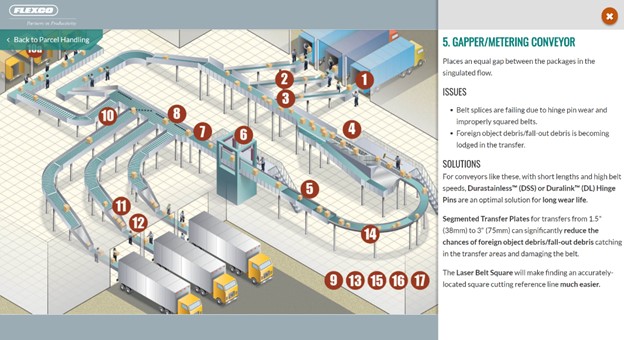
The above interactive graphic demonstrates the process of parcel handling for one of our clients.
2. Technical Jargon
Another manufacturing UX challenge: A site filled with technical jargon, acronyms, and industry-specific terms that might not communicate readily with your entire audience. The need to convey specific information, coupled with the goal of making it understandable to a broader audience, becomes a delicate balance in designing good UX Into your website.
Solutions:
- Editing matters. Invest in a wordsmith to simplify language without sacrificing accuracy. Manufacturers should translate complex terms into simpler language when possible. Clarify terms in plain language to communicate with a broader audience.
- Tooltips or pop-ups can provide concise definitions and context for complex terms and jargon on demand when users encounter them, and they do so without cluttering the main interface. Ready contextual help within the content offers seamless access to relevant explanations. It also makes users feel in control of the flow of information, rather than being overwhelmed by an onslaught of information.
- Glossaries, dedicated sections that define and elaborate on industry-specific terms, give users ready reference for traversing the technical wordscape.
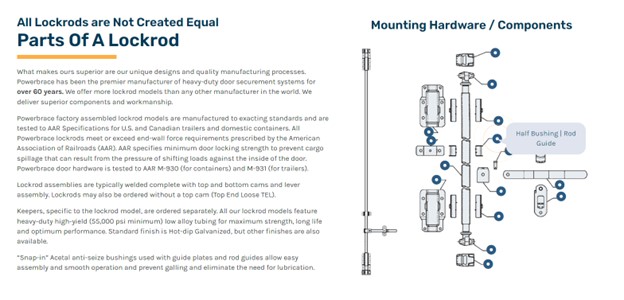
The tooltip in the above example helps users better understand the mounting hardware components of a lockrod.
3. Large Amounts of Documentation and Manuals
Documentation and manuals spread across various documents tucked away in website nooks and crannies frustrate users as they seek specific information. The manufacturing UX challenge: Provide a seamless experience for users to efficiently access and retrieve precise details embedded in these crucial documents.
Solutions:
- A robust search functionality that helps users quickly locate specific terms or topics within the documentation.
- A filterable resource library for manufacturing websites with extensive documentation and manuals enhances UX by gathering all of this information in one section of the website. A structured and customizable interface enables seamless navigation through diverse documents and easy location of relevant information.
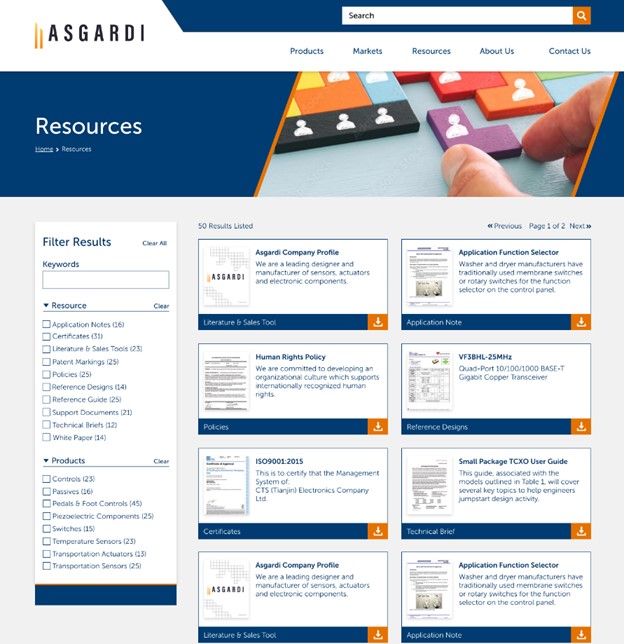
Above is an example of a resource library we created for one of our clients. Users can filter by resource type or product type.
4. E-Commerce Functionality
UX is important for product management. It ensures that users can effortlessly explore the full range of available products. Seamless navigation is a big part of good UX. It makes users confident about their product selections and, therefore, more likely to convert rather than abandon their carts.
Compared with retail checkout, manufacturing e-commerce websites have more nuanced processes. Customers must often consider such complexities as variable product configurations and bulk ordering requirements. The intricacies of pricing structures, customizations, and product variations pose a hurdle in giving the buyer a straightforward and intuitive e-commerce journey.
Solution: Again, Human-Centered Design
- Simplify the steps required for purchase. Make pricing transparent. Offer clear instructions. Streamline the buying process and reduce friction to improve user satisfaction.
- A streamlined bulk ordering process with tiered pricing models makes it easier for business clients to place large orders. It also boosts their confidence in the accuracy and efficiency of those orders.
- Manufacturers should consider robust product customization features, to cater to clients with specific requirements. A user-friendly product configurator allows customers to personalize their orders efficiently.
- Enable users to access their order histories, to simplify the process of reordering items they frequently purchase.
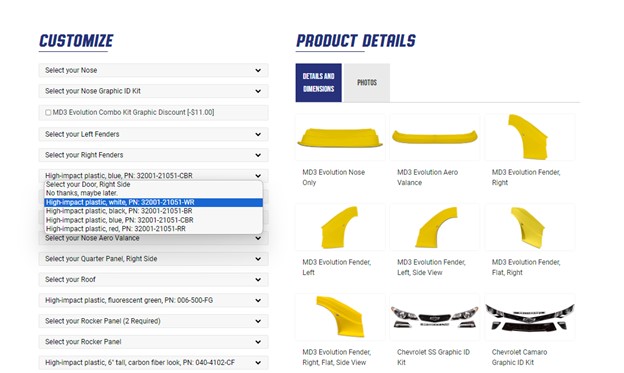
The check out process above allows users to customize the product before adding it to their carts.
5. Diverse User Base
Another UX challenge for manufacturers: dealing with a user base with varying skill levels, technical knowledge, preferences, and geographic locations. Designing an interface that accommodates both seasoned industry professionals and users with limited technical expertise can be a daunting task. The complexity of manufacturing processes and technical details might frustrate users new to the field as they get lost in navigation and cannot find what they seek.
Last but not least, accommodating multiple languages for world-wide sales is a challenge unto itself.
Solution: You Guessed it … Human-Centered Design
- Conduct thorough user research to understand the needs, preferences, and skill levels of different user segments. (Follow the link to our blog on how to leverage user testing to its fullest.) Gather user feedback and conduct usability testing regularly, so solid UX data informs the ongoing refinement of your presentation of product information. Continuous design iterations based on user insights can shape a website that delivers comprehensive product information in a form that serves customers well.
- Implement robust multi-language support to attract and serve global audiences in the languages of those audiences.
- Provide options for users to adjust the level of technical detail displayed. Or let them choose between beginner and advanced modes, to significantly enhance usability. This not only empowers users to personalize their experiences, it also ensures that the website remains accessible to a diverse audience.
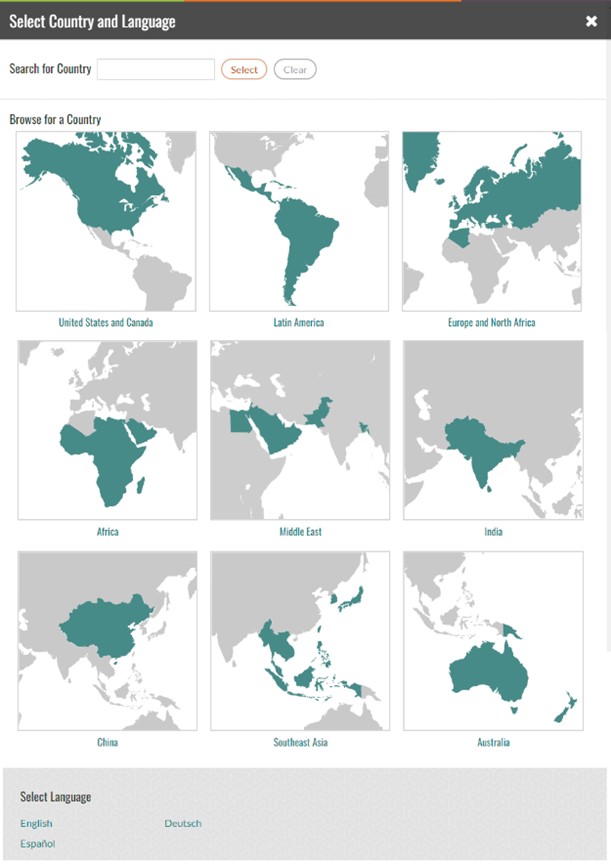
The example above is a very robust language switcher that even considers the geographical location of the user.
Conclusion
Despite the complexities manufacturers face in creating user-friendly websites that meet a variety of stakeholder needs, solutions do exist. Addressing manufacturing UX challenges will help make visitors happy, turning them into customers and long-term brand advocates.
If you’re a manufacturer struggling with complicated website challenges, we specialize in making the complex simple. Reach out to us for a consultation.






